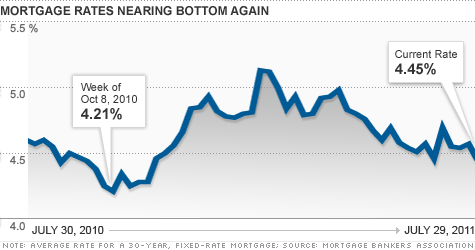Key Elements to Consider in Constructability Review Guidelines

When it comes to construction projects, ensuring efficiency, timeliness, and budget adherence is crucial. Constructability review guidelines play a vital role in achieving these goals. These guidelines help identify potential issues early in the design phase, allowing for adjustments that can save time and resources during construction. This blog will explore key elements to consider in constructability assessment guidelines to ensure the success of construction projects.
1. Understanding the Scope of the Project
One of the first elements to consider in constructability review guidelines is a clear understanding of the project scope. This involves defining the project’s objectives, deliverables, and boundaries. A well-defined scope helps in identifying potential constructability issues early on and provides a solid foundation for planning and execution.
Key Points
- Clearly define the project objectives and deliverables.
- Identify project boundaries and limitations.
- Ensure all stakeholders have a shared understanding of the project scope.
2. Early Involvement of Key Stakeholders
Including key stakeholders early in the process is essential for a comprehensive constructability review. Stakeholders such as architects, engineers, contractors, and clients bring different perspectives and expertise. This diversity can help identify potential issues that might be overlooked by a single party.
Key Points
- Involve architects, engineers, contractors, and clients from the beginning.
- Conduct regular meetings to discuss potential issues and solutions.
- Encourage open communication and collaboration among stakeholders.
3. Review of Design Documents
Thoroughly reviewing design documents is critical to identifying constructability issues. This includes examining blueprints, specifications, and other design-related documents to ensure they are clear, complete, and feasible.
Key Points
- Ensure the design documents are clear and complete.
- Verify that the specifications are realistic and achievable.
- Identify any ambiguities or inconsistencies in the design.
4. Assessing Site Conditions
Understanding the physical conditions of the construction site is vital for an effective constructability review. This includes assessing factors such as topography, soil conditions, weather patterns, and existing infrastructure.
Key Points
- Conduct a detailed site assessment.
- Consider how site conditions might impact construction activities.
- Plan for potential site-related challenges.
5. Evaluating Construction Methods and Materials
Selecting appropriate construction methods and materials is a key aspect of constructability. Review guidelines should evaluate the feasibility of proposed methods and materials in terms of availability, cost, and compatibility with the project’s design and site conditions.
Key Points
- Assess the feasibility of construction methods and materials.
- Consider the availability and cost of materials.
- Ensure compatibility with the project’s design and site conditions.
6. Identifying Potential Risks and Mitigation Strategies
Identifying potential risks early in the project can help in developing effective mitigation strategies. Constructability review guidelines should include a comprehensive risk assessment covering all aspects of the project, from design to execution.
Key Points
- Conduct a thorough risk assessment.
- Determine any potential threats and how they might affect the project.
- Develop and implement mitigation strategies.
7. Ensuring Compliance with Regulations and Standards
Compliance with relevant regulations and standards is crucial for the success of any construction project. Constructability review guidelines should ensure that all design and construction activities comply with local, state, and federal regulations, as well as industry standards.
Key Points
- Verify compliance with all relevant regulations and standards.
- Ensure design and construction activities adhere to safety and quality standards.
- Keep updated with changes in regulations and standards.
8. Cost Estimation and Budget Management
Accurate cost estimation and effective budget management are essential for maintaining the financial health of a construction project. Constructability review guidelines should include detailed cost estimates and strategies for managing the budget throughout the project lifecycle.
Key Points
- Develop accurate and detailed cost estimates.
- Implement strategies for effective budget management.
- Monitor costs regularly to avoid overruns.
9. Scheduling and Timeline Management
Effective scheduling and timeline management ensure that construction projects are completed on time. Constructability review guidelines should include strategies for developing realistic schedules and managing timelines effectively.
Key Points
- Develop a realistic project schedule.
- Identify critical paths, activities, and milestones.
- Implement strategies for managing and monitoring timelines.
10. Communication and Coordination
Effective communication and coordination among all parties involved are vital for the success of construction projects. Constructability review guidelines should include strategies for ensuring clear and consistent communication.
Key Points
- Develop a communication plan for the project.
- Ensure regular and clear communication among stakeholders.
- Use tools and platforms to facilitate coordination.
Conclusion
Constructability review guidelines are essential for the successful execution of construction projects. By considering the key elements outlined in this blog, project managers and stakeholders can identify and address potential issues early, ensuring that projects are completed on time, within budget, and to the highest quality standards.
From understanding the project scope and involving key stakeholders to leveraging technology and promoting continuous improvement, these guidelines provide a comprehensive framework for enhancing constructability and achieving project success.
FAQs
1. What makes a good constructability review?
A good constructability review involves planning well and getting key people involved early. It also means checking design papers carefully, thinking about the site, looking at how things will be built, and finding any possible problems before they happen.
2. What are the elements of constructability?
Constructability includes knowing what the project is about, getting everyone involved from the start, checking design papers, and looking at the site. It also means thinking about how things will be built, following rules, figuring out costs, making a schedule, managing risks, and making sure things are done well.
3. What is the constructability score?
The constructability score tells us how good a plan is for building something. A higher score means the plan is good and building will be easier. A lower score means there might be problems during construction.
4. Why is constructability important?
Constructability is important because it helps catch problems early and makes building things smoother. This saves time and money, and the things built turn out better. It makes sure projects finish on time and without spending too much.
5. What are the goals of a constructability review?
The goals of a constructability review are to find and fix problems before building starts. It wants to make building things easier, cheaper, and of better quality. It makes sure everyone knows what to do, so everything goes smoothly.



